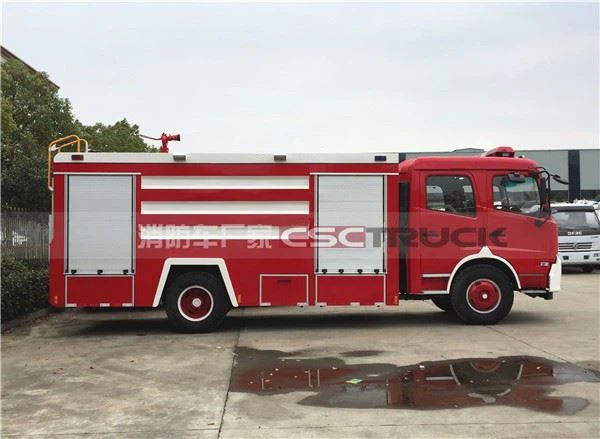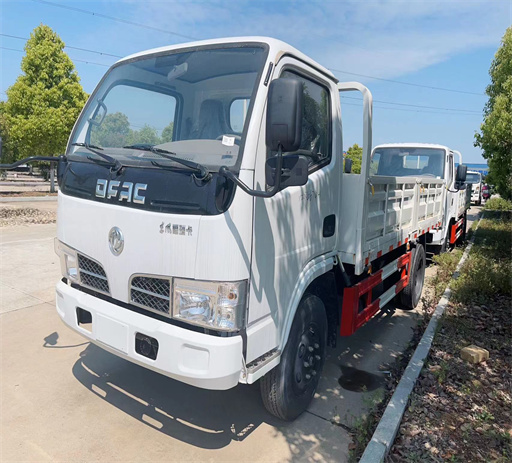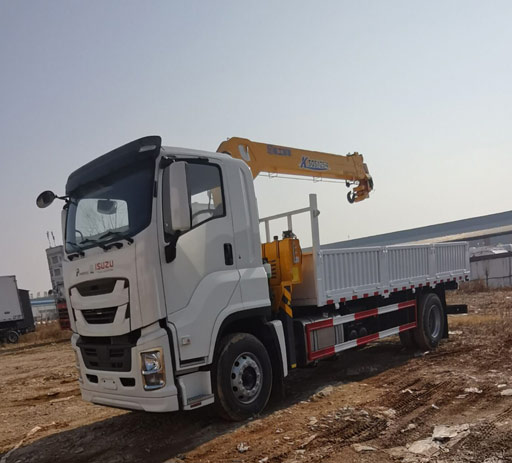Double Cab vs Crew Cab: Which Pickup Truck Configuration is Right for You?

Introduction
Pickup trucks have become increasingly popular for their versatility and utility, making them ideal for a variety of purposes, from work to leisure. Among the various configurations available, double cab and crew cab are two of the most common types. Understanding the differences between these two configurations can greatly influence your decision when purchasing a pickup truck. This article provides an in-depth comparison of double cab and crew cab trucks, exploring their features, advantages, disadvantages, and practical considerations.

What is a Double Cab?
A double cab truck features a four-door configuration that offers a spacious interior. Unlike traditional cab options, double cabs provide additional seating space in the back. This type is often designed to accommodate up to five or six passengers, making it a practical choice for families and those who require extra capacity.
Double Cab Features
- Passenger Capacity: Typically seats up to five or six people.
- Interior Space: More rear seat space compared to standard cabs.
- Bed Length: Often offers a longer bed length compared to crew cabs.
Pros and Cons of Double Cab

| Pros | Cons |
|---|---|
| More cargo space in the bed | Less rear legroom compared to crew cab |
| Cost-effective option for families | Back seats may be less comfortable for adults |
| Great for work and casual use | Not ideal for frequent long-distance travel with multiple passengers |
What is a Crew Cab?
Crew cab trucks feature a similar four-door configuration but usually offer even more rear passenger space and comfort than double cabs. With ample legroom and wider rear seats, crew cabs are designed with passenger comfort in mind, making them a popular choice among family-oriented buyers.
Crew Cab Features
- Passenger Capacity: Generally seats up to five or six people comfortably.
- Interior Space: Superior rear seat legroom and headroom compared to double cabs.
- Bed Length: Often comes with a shorter bed compared to double cabs.
Pros and Cons of Crew Cab
| Pros | Cons |
|---|---|
| Comfortable seating for adults in the back | Less cargo space in the bed |
| Ideal for long trips with family | Higher purchase price compared to double cabs |
| Excellent for urban driving and everyday use | May sacrifice towing capacity due to weight distribution |
Key Differences Between Double Cab and Crew Cab
1. Interior Space
One of the most significant differences between double cab and crew cab trucks is the interior space available to passengers. Double cabs tend to have cramped rear seats compared to crew cabs, which prioritize comfort. If you frequently travel with passengers in the back, a crew cab may be the better choice.
2. Cargo Bed Size
Double cabs generally have a longer cargo bed compared to crew cabs. This feature makes double cabs more appealing for those who prioritize hauling capability over passenger comfort. If you often transport large items or equipment, the increased bed size of a double cab may meet your needs better.
3. Price Point
Generally, crew cabs tend to be more expensive than double cabs due to their increased comfort and spaciousness. Budget-conscious buyers might find double cabs to be a more affordable option while still providing necessary passenger capacity.
4. Towing and Payload Capacity
Depending on the model and configuration, double cabs may offer slightly better towing and payload capacities. This attribute is crucial for those who use their trucks primarily for work-related tasks, such as towing trailers or carrying heavy loads.
5. Fuel Efficiency
Truck configurations can also impact fuel efficiency. Generally, crew cabs can be heavier than double cabs, potentially resulting in lower fuel efficiency. However, this may vary depending on the engine and other design factors. Buyers should consider their driving habits to evaluate which configuration aligns best with their fuel expectations.
Practical Examples of Usage
When to Choose a Double Cab
If you primarily use your truck for work, transporting tools, or cargo, a double cab can be a practical choice. They are amenable for family use, especially for short trips or local errand running. Here are some scenarios where a double cab is ideal:
- Construction workers needing to transport equipment and tools.
- Families who occasionally take road trips but prioritize cargo space.
- Anyone who frequently hauls larger items without needing a large passenger area.
When to Choose a Crew Cab
If passenger comfort is a top priority, especially for longer trips, a crew cab is the way to go. Here are some practical situations where a crew cab shines:
- Families who regularly travel with multiple children or adults.
- Outdoor enthusiasts who enjoy camping and need room for passengers.
- A company owner needing to transport teams without sacrificing comfort.
Analyzing Different Truck Models
Popular Double Cab Models
Several truck brands offer high-quality double cab options suited for various needs. Below are some popular choices:
- Toyota Tacoma Double Cab: Known for its durability and off-road capabilities, it’s an excellent choice for adventurous users.
- Ford F-150 SuperCrew: Offers a spacious double cab configuration with impressive towing capacity.
- Chevrolet Colorado Double Cab: A compact option with a strong engine lineup, for those needing a smaller truck.
Popular Crew Cab Models
For those interested in crew cab models, consider the following popular options:

- Ram 1500 Crew Cab: Provides a luxurious interior and exceptional comfort, making it perfect for families.
- GMC Sierra Crew Cab: Known for its refined interiors and advanced safety features, ideal for family trips.
- Nissan Titan Crew Cab: Offers a blend of comfort and ruggedness, suitable for diverse driving needs.
Maintenance and Longevity Considerations
Regular Maintenance
Regardless of whether you choose a double cab or crew cab, regular maintenance is essential to extending the lifespan of your truck. Follow these general maintenance tips:
- Inspect and change the oil regularly.
- Check tire pressure and tread depth.
- Perform brake inspections and replacements as needed.
- Follow your manufacturer’s maintenance schedule for servicing.
Longevity of Double Cab vs. Crew Cab
Both double cab and crew cab models can last a long time if properly maintained. However, crew cabs may experience more wear and tear due to frequent passenger use, especially with larger families or groups. Choosing quality materials and reputable brands can also significantly affect the longevity of your truck, regardless of the cab configuration.
Resale Value Comparison
When considering double cab vs. crew cab, it’s essential to think about resale value. Generally, crew cabs tend to have a better resale value due to their popularity and comfort features. However, double cabs can also maintain good resale value, especially when marketed for work purposes. Factors influencing resale value include brand reputation, condition, mileage, and market demand.
FAQ Section
1. What is the primary difference between double cab and crew cab?
The primary difference lies in interior space and passenger comfort. Crew cabs offer more legroom and overall comfort for rear passengers than double cabs do.
2. Is a double cab more suitable for families?
Double cabs can work for families but may not be as comfortable for long trips as crew cabs, which prioritize back seat space and comfort.
3. Do double cab trucks have a larger cargo bed?
Yes, generally, double cab trucks have a longer cargo bed compared to crew cabs, making them better for hauling larger loads.
4. Which truck configuration is better for towing?
Both configurations can be suitable for towing, but double cabs may offer slightly better towing capacities depending on the model you choose.
5. What should I consider when buying a truck?
Consider your passenger needs, cargo requirements, budget, and intended use of the truck. Test driving both configurations is also advisable to feel the differences in comfort and usability.
6. Can I modify my truck for more space?
While some modifications are possible, enhancing passenger space often has limitations. Choosing the right cab configuration from the start is recommended for optimal comfort and usability.
